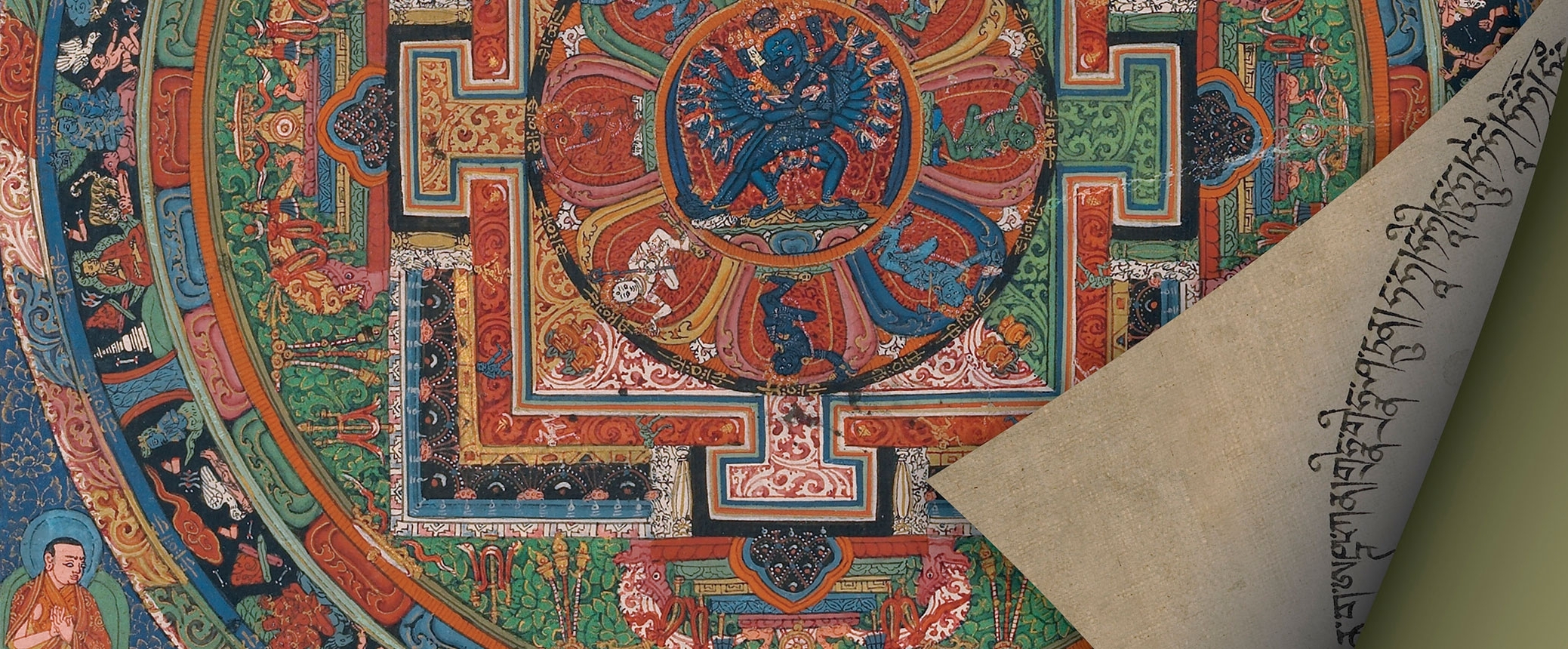
The texts and images on the back of Tibetan art objects reveal clues to their meaning, function, and historical context. For the first time ever both sides of a select group of scroll paintings (thangkas), sculptures, and initiation cards are explored in detail. Chosen for the beauty, exceptional content, and complexity of their backs, these works of art dating from the 13th to the 19th century illuminate the many uses of the other side in Tibetan culture.
Much of what is found on the reverse relates to the consecration ritual through which the work becomes a religious object. Handprints of eminent masters and drawings strengthen this religious aspect and are explained along with the key Buddhist texts found there as well. The writing also contains clues for identifying the representations on the front and historical details. Such texts range from veneration mantras dedicated to the immediate teachers of the donor to sophisticated poems of praise mentioning historical personages in the memory of which the work of art was made.
Curated by Christian Luczanits
Plan your visit
Send Your Comments
Comments are moderated, and will not appear on this site until the Rubin has approved them.


